If you’re a quilter, then you’ve likely anguished over the more difficult elements of your craft. Bringing a long arm quilting machine into your home, with the convenience it offers, may, in turn, sound tempting.
There are positives and negatives to the integration of these machines with your quilting practice. Even so, they remain a curious tool.
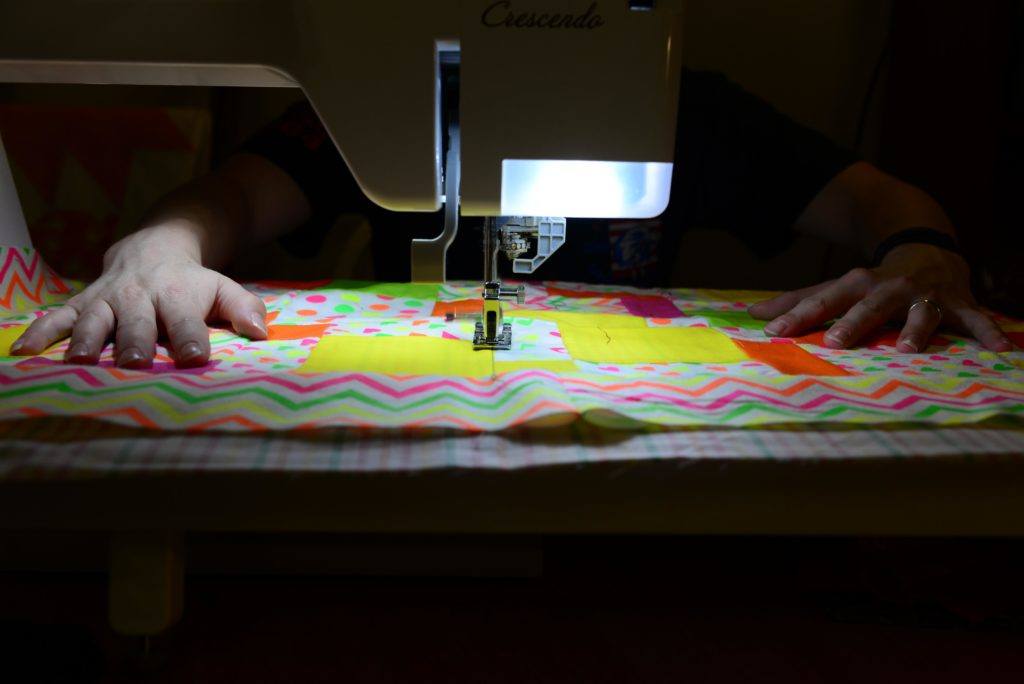
Do you need a long arm quilting machine, what can they really accomplish, and what features should yours have?
We discuss all this and more, so read on!
Long Arm Quilting: An Introduction
First things first, what is long arm quilting?
Longarm quilting sews a quilt top, batting, and back together in order to complete the quilting process. Because the majority of quilts are exceptionally large, this process cannot be completed without the help of a long arm quilting machine – unless you do it by hand.
To understand the scope of long arm quilting, you need an idea of what the machine looks like. To begin with: they’re exceptionally large.
A quilt’s top, batting, and back are placed within a steel or aluminum casing that comes to roughly the size of a British telephone box.
Then as it works on the quilt, the head of the machine moves on its vertical and horizontal axes in order to extend its reach, covering the entire project. Because of this, the fabric you choose will remain secure, avoiding missed stitches or accidental bunching.
Sound like a lot? When you first look at a long arm quilting machine, it definitely seems to be. However, the advent of modern technology has made the long arm quilting process a little easier.
If you like, you can work with a long arm sewing machine the old fashioned way and finish your quilting work by hand. However, you can also find a computerized long arm quilting machine that will quilt your designs for you.
The (Incomplete) History of the Long Arm Quilting Machine
The first manual, long arm quilting machine was put to use in 1871.
This early quilting machine only included a quilting frame to fold the fabric in place, and it used limited machinery in order to make it operate.
Seamstresses and quilters who wanted to use the machine would have to move the fabric itself in order to sew a quilt’s top, batting, and back together.
In 1877, the design was altered and improved, so that it included a crank that allowed the machine to operate without electricity.
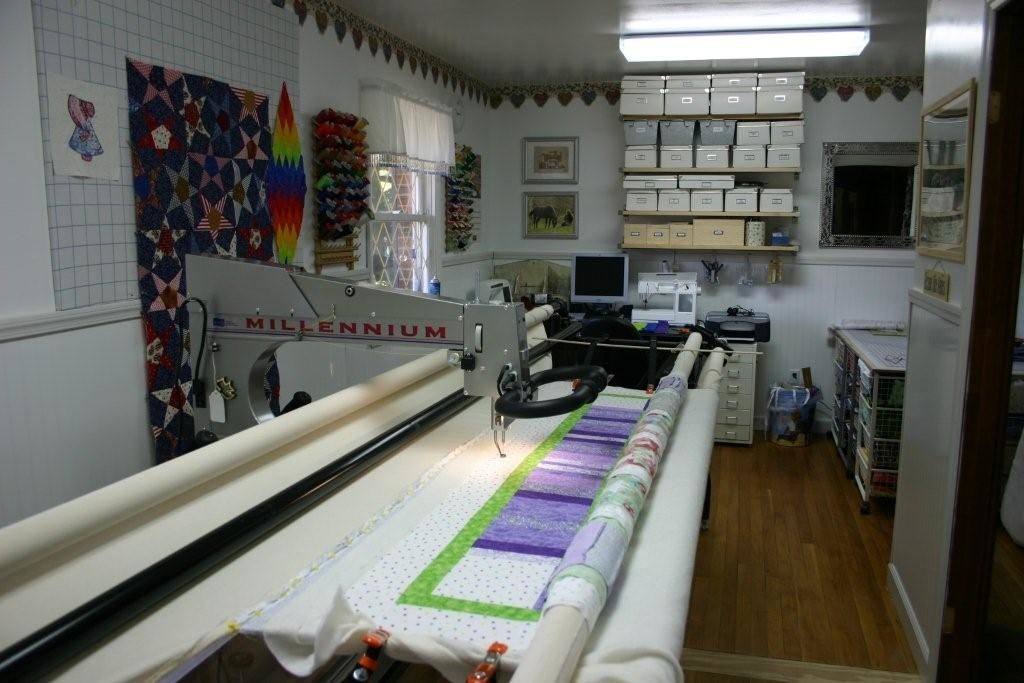
This design is, at this point, somewhat similar to that which we see today. However, the look of long arm quilting machines is ever-evolving.
Nowadays, you can find ones that are shorter, larger, compact, and expansive. These designs have evolved so that quilters everywhere can have their needs met.
At this point in time, there are ten major corporations in North America that work to develop these machines for the modern quilter, including:
- A-1 Quilting Machines.
- APQS.
- Bernina.
- Gammill.
- The Grace Company.
- Handi Quilter.
- Husqvarna.
- Juki.
- PFAFF.
- Tin Lizzie.
Brother and Singer, of course, are two well-known North American corporations that have cornered the market on the craft of sewing.
These two corporations, though, are diverse enough that they frequently find themselves outmatched when their quilting machines are compared to those produced by the aforementioned companies.
The Gears Behind Quilting Machines
How does a long arm quilting machine work, though?
Specifically, the machine itself uses several rolling bars that move along metal tracks. Some of these rolling bars direct the design work of the seamstress using the machine. Others, referred to as feeder bars, offer beds onto which you can set a quilt’s top and backing.
Sound like a lot? That’s because it is. Working with a long arm quilting machine takes lots of practice. That’s why the integration of computer electronics into these machines has been a massive advantage to some beginners.
Long arm sewing machines that rely on manual support allow you greater control over the design of your quilt, of course.
However, when a long arm sewing machine is directed by a computer, that system enables you to choose your design in advance, and then watch as the machine goes to work.
Arguments exist, of course, over the validity of this process, but if you’re looking for assistance with a complex design or are tired after a long day of work, that computer automation can save you time and stress.
Finally, long arm quilting machines also have tables that come in a variety of sizes. The larger the table included, the larger the quilt you can make.
These tables are also ideal for setting down patterns that you can follow if working manually.
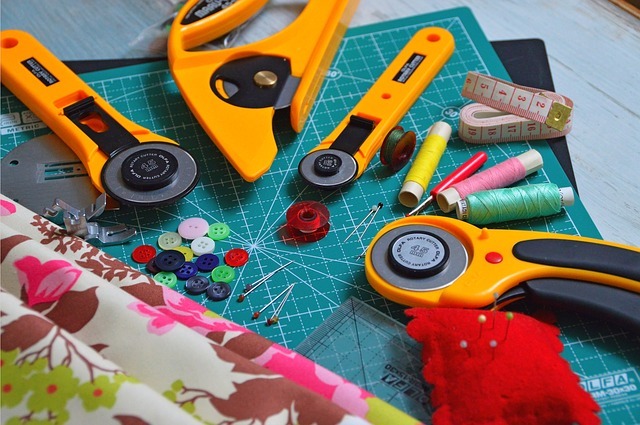
Framing the Long Arm Practice
What matters most is the frame. This is where the quilting machine gets the bulk of its size. Determining what size of frame you want will dictate the size of project you can choose.
It’ll also determine how much room you have to designate for the craft in your home.
Long Frames
Longer frames can naturally support larger quilting projects. These frames are more than just lengthy, however.
Before purchasing a machine of this nature for your home, you should consider it three-dimensionally, as they can be roughly the size of British telephone boxes. Some of the largest can weigh up to 7,000 pounds.
If you are keen on pursuing ambitiously large projects, take a couple of factors into account.
For starters: what are the non-length dimensions of your machine? As such, where in your home or apartment will it fit?
How will your own height factor into your ability to use the machine? Do you want a model that’s stationary, or could you work more effectively with a quilting machine that has an adjustable height?
Short Frames
If you are on the shorter side or want a smaller quilting machine in your home, you’re in luck. Short frame varieties, or mid-arm quilting machines, are readily available for you to use.
These frames typically max out at five feet in height and use larger clamps in order to hold quilting tops, batting, and backs in place.
These frames can also be expanded, either through adjustability or through special requests to the manufacturer.
As such, if you find you’re not content with your smaller frame, or if you move to a new home with more space, you can increase the size of your machine with little hassle.
Sometimes it’s easier to begin small and upgrade over time, rather than going for a larger frame right off the bat.
Nonetheless, it’s important to choose the quilting machine that’ll suit your own personal style and needs, so don’t let size hold you back from a perfect fit.
This video shows an example of how a long arm quilting machine works.
Benefits of Long Arm Quilting Machines
Even though they appear complicated to use, there are a number of benefits to investing in a long arm quilting machine for your craft room.
Here are a few ways these advanced machines outweigh their cons with pros:
Convenience
It does seem odd that a machine maxing out at seven feet in height is convenient to own. However, while it may not be the most size-friendly crafting tool, a long arm quilting machine does save a lot of time.
For example, you don’t have to wait for controlled workshops or work days in order to get started on your quilt design.
Some maker-spaces and similar organizations have long arm quilting machines available within their facilities, but these are typically for members only – or only during a few days of the week. When you have a long arm sewing machine in your home, you can work at a convenient pace.
Additionally, because some long arm sewing machines are computerized, you can rely on a computer algorithm to handle the more difficult aspects of your design. No need to strain yourself working on a tight angle, and leave your seam ripper in its drawer.
Long arm sewing machines that have automation not only save you time but make your more ambitious projects all the easier to complete.
Control
You can also choose how and to what degree your machine is used. Manual quilting machines, in particular, ensure that you have minute control over every step of your quilt binding and design process.
You can choose how much energy you want to put into a certain design element over the course of a day.
You can also determine the finer points of your design and change it as necessary if the project begins to evolve in unexpected ways.
Entirely DIY
Finally, a project you undertake with the help of a long arm quilting machine will be entirely your own. No need to rely on a manufacturer or workshop to create your perfect quilt. You’ll have your fingerprints on every step.
For some, this ability to work through an entire quilting project from start to finish is a true testament of skill. For others, being able to give away entirely homemade quilts as gifts is a unique point of pride.
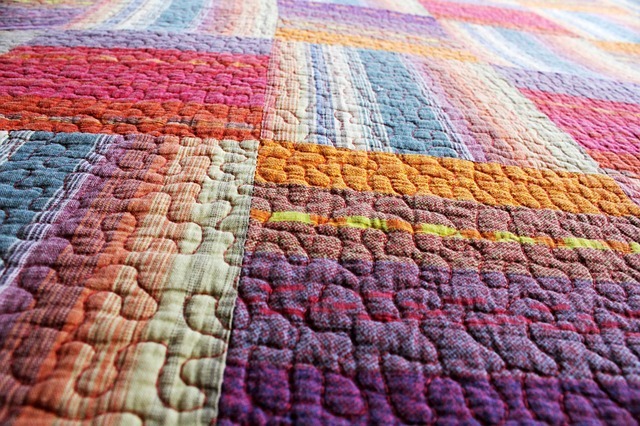
Either way, using a long arm quilting machine leaves your projects entirely within your control. Take pride in your accomplishment, rest a moment, and then start all over again.
The Drawbacks of Long Arm Quilting Machines
With all of that said, a long arm quilting machine isn’t right for everyone. There are a few notable downsides to the machine, which may dissuade you from this expensive and physically large investment.
Size
As you may have noticed, long arm quilting machines are not especially small. Bringing one into your home can be a significant challenge, no matter how convenient the machine itself is.
You may have to clear out space that you don’t have or crowd an already cluttered crafting room.
Furthermore, should you live on a second, third, or higher floor – your home may not be capable of handling 7,000 pounds in one area.
If you ever need it moved to a new home, professional help will likely be needed, even with the smaller models.
In any case, the physical bulk of this machine could rule it out as your chosen tool. As such, you lose the opportunity to work on a project at your own schedule.
Cost
Long arm quilting machines are also fairly expensive.
Singer and Brother sewing machines raise eyebrows when their price tags reach toward $1,000. The average long arm quilting machine, in comparison, costs $4,000.
This is not a tool for the faint of heart. If you intend on bringing this machine into your home, make sure you’re serious about your craft and this machine’s use. Several thousand dollars isn’t something most of us can throw around easily.
In some ways, that high cost is what makes a long arm sewing machine better for a professional quilting business, as opposed to hobbyist work.
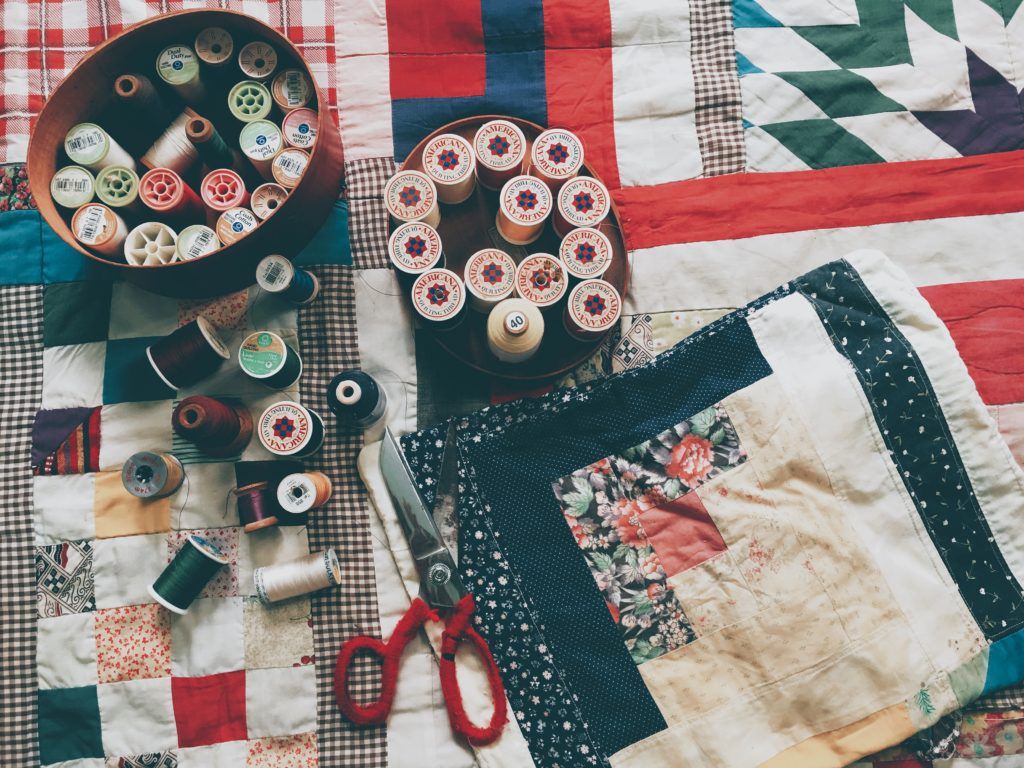
Experience and Ease of Use
Learning how to use this machine can be exceptionally difficult. For starters, you have to teach yourself how to work with a machine that, in many cases, is far bigger than yourself.
More-so, you’ll have to unlearn certain quilting habits integrated into your practice, as this machine operates in a certain way and does not invite MacGyver solutions.
Combine these factors with computerization, and many quilters are faced with what seems like an impossible learning curve.
Buying a Long Arm Quilting Machine: Is It Worth It?
In light of all this, is buying a long arm quilting machine worth it? That depends entirely on you.
If you have the room in your budget, and you think you’ll quilt more effectively with one, then go ahead. If you’re quilting as a hobby, though, it’s wise to leave this machine in the shop.
This video goes into more detail about buying a long arm quilting machine.
Long arm quilting machines are fascinating sewing tools and have been in circulation for over a century.
Their use remains highly specialized, though. As such, don’t go rushing out to buy one unless you’re absolutely certain it’ll be used on a weekly basis.
Even then, take time to familiarize yourself with these machines. The heart of quilting and sewing, after all, is patience – and these machines demand a great deal of it.
Do you have experience with a long arm quilting machine?
